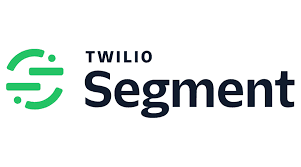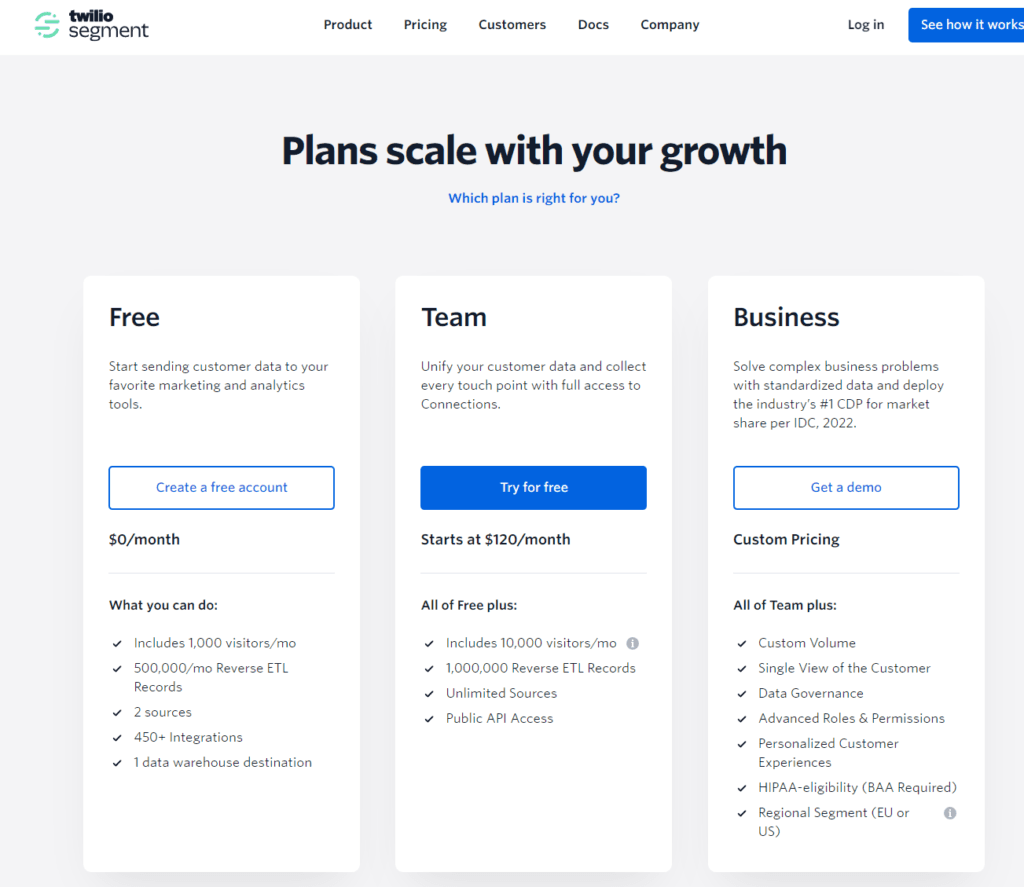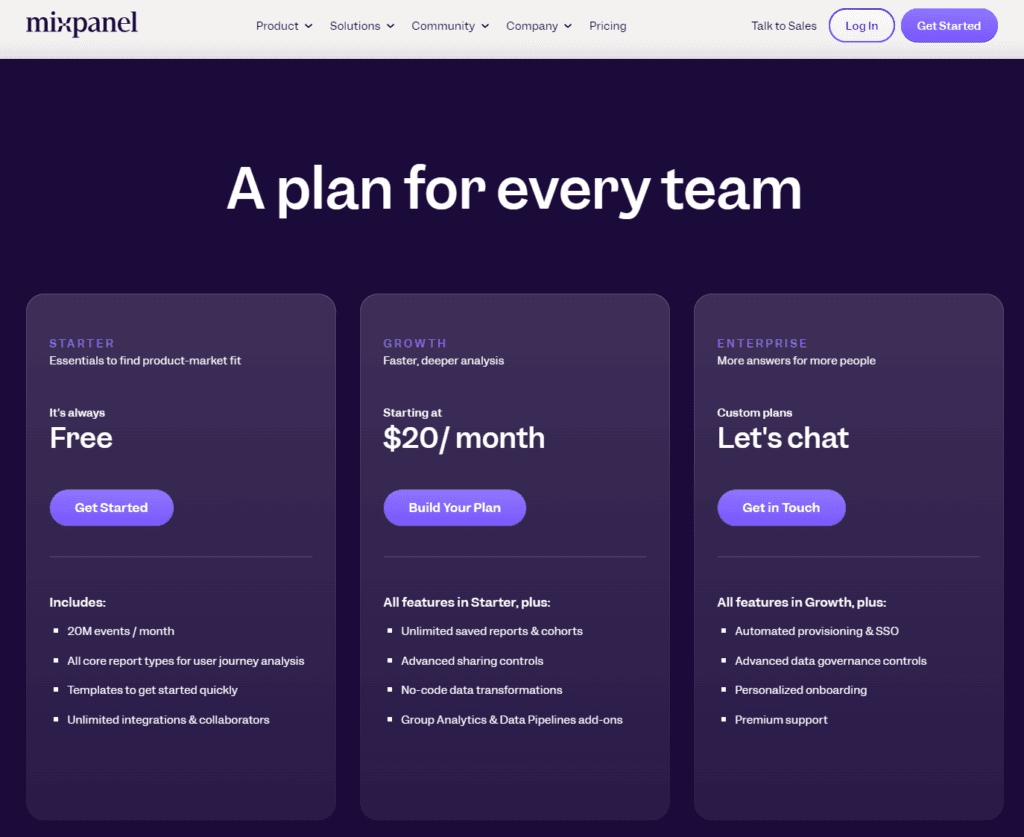In the ever-evolving digital landscape, where data acts as the compass guiding business strategies, choosing the right analytics tool is pivotal. Segment and Mixpanel emerge as two titans in the realm of analytics, offering distinct approaches to understanding and leveraging data. While Segment excels as a customer data platform (CDP), designed to collect, unify, and route your data across a plethora of tools, Mixpanel specializes in user behavior analytics, providing deep insights into how users interact with your product. This initial exploration into their functionalities sets the stage for a detailed comparison, shedding light on which platform might be the best fit for your business needs. Let’s delve into the crucial aspect of Data Collection and Management.
Segment | Mixpanel |
|---|---|
| G2 Score – 4.6 out of 5 stars | G2 Score – 4.6 out of 5 stars |
| TrustRadius Score – 8.3/10 | TrustRadius Score – 8.4/10 |
Data Collection and Management
The backbone of any effective analytics strategy is robust data collection and management. How Segment and Mixpanel handle these tasks can significantly influence their utility for your business.
Segment: A Unified Data Infrastructure
Segment positions itself as a powerful customer data platform that excels in collecting data from various sources such as websites, mobile apps, servers, and more. Its primary strength lies in its ability to unify this data, creating a single source of truth that can be seamlessly integrated across a wide range of tools. This unified data infrastructure facilitates a comprehensive view of customer interactions across different channels, enabling businesses to leverage their data more effectively.
The platform’s focus on data management also extends to ensuring data quality and consistency, which are critical for accurate analysis and decision-making. By providing tools for data cleansing and enrichment, Segment ensures that the data fed into analytics and marketing tools is reliable and actionable.
Mixpanel: Focused on Behavioral Data
Mixpanel takes a more focused approach, specializing in the collection and analysis of user behavior data. It provides businesses with the tools to track specific user actions on their websites and apps, offering granular insights into how users engage with their products. Mixpanel’s strength lies in its detailed event tracking capabilities, allowing businesses to understand user journeys, measure conversion rates, and identify areas for improvement.
Unlike Segment, Mixpanel directly offers analytics capabilities, enabling businesses to analyze and visualize user behavior data within the same platform. This integrated approach to data collection and analysis makes Mixpanel particularly appealing for product teams and marketers focused on optimizing user experience and engagement.
Real-time Data Processing and Analysis
In today’s fast-paced digital environment, the ability to process and analyze data in real-time is increasingly critical. It enables businesses to make timely decisions, react to user behavior as it happens, and optimize their strategies on the fly.
Segment: Streamlined Data Routing for Timeliness
Segment’s architecture is designed to support real-time data collection and routing. As a customer data platform, Segment excels in capturing user interactions across various touchpoints and immediately making this data available to other tools in the tech stack. This capability is crucial for businesses that rely on immediate data insights to power real-time personalization, marketing automation, and customer support initiatives.
While Segment itself does not specialize in data analysis, its strength lies in its ability to feed real-time data into analytics platforms that do, enabling those tools to provide timely insights and analyses. This makes Segment an essential component of a real-time data strategy, especially for businesses that utilize a diverse set of tools for analytics and engagement.
Mixpanel: In-depth Real-time Behavioral Analytics
Mixpanel differentiates itself by offering robust real-time analytics capabilities directly within its platform. It focuses on analyzing user behavior as it happens, providing immediate insights into how users interact with your product. This real-time analysis allows businesses to quickly identify trends, monitor engagement levels, and respond to user actions with minimal delay.
Mixpanel’s real-time dashboards and reports are designed to be both powerful and accessible, enabling teams across the organization to monitor key metrics and make data-driven decisions swiftly. This focus on real-time behavioral analytics makes Mixpanel particularly valuable for product teams and marketers looking to optimize user experiences and engagement strategies continuously.

Related: Check out our free SEO suite

Cost Efficiency and ROI
The cost of implementing and maintaining an analytics solution, balanced against the tangible benefits it delivers, can significantly influence its overall value to your business. In selecting an analytics tool, understanding the financial implications, both immediate and long-term, alongside the expected return on investment, is crucial for making an informed choice.
Segment: Scalable Pricing for Diverse Needs
Segment offers a tiered pricing model that caters to businesses of various sizes and stages, from startups to large enterprises. The cost associated with Segment scales with usage, primarily based on the number of monthly tracked users (MTUs) and the suite of features required. For small businesses or those just starting with data infrastructure, Segment provides a free tier with basic functionalities, allowing companies to grow into more advanced features and higher usage tiers over time.
The ROI from using Segment often stems from its ability to unify and streamline data flows across multiple platforms, improving the efficiency of marketing campaigns, personalization efforts, and overall decision-making processes. For businesses that leverage a wide array of tools and channels, the investment in Segment can lead to significant time and resource savings, alongside deeper insights derived from a consolidated data strategy.
Mixpanel: Value-Focused Analytics Pricing
Mixpanel’s pricing is structured around the volume of data events tracked, offering plans that accommodate businesses from early-stage startups to large enterprises. This approach ensures that companies only pay for the scale of analytics they need, making Mixpanel a cost-effective option for businesses focused on detailed behavioral analysis and user engagement metrics.
The ROI with Mixpanel is closely tied to its ability to provide actionable insights that directly impact product development, marketing strategies, and customer retention efforts. By offering deep visibility into how users interact with your product in real time, Mixpanel enables businesses to make data-driven adjustments that can significantly enhance user experience and, consequently, business growth and revenue.
Ease of Implementation and Learning Curve
The simplicity with which you can implement an analytics solution, along with the ease of mastering its use, directly influences how quickly your team can start deriving valuable insights from it. The time and resources required to fully deploy and utilize an analytics platform can significantly impact its overall value to your organization.
Segment: Comprehensive Yet Complex
Segment’s powerful data integration capabilities come with a certain level of complexity, particularly when setting up advanced data pipelines or integrating a wide array of tools. The initial implementation phase may require involvement from technical staff to ensure data is being collected and routed correctly. However, once set up, Segment’s infrastructure facilitates a seamless flow of data across your entire tech stack, potentially transforming how your business leverages data.
The platform offers extensive documentation, community forums, and customer support to help mitigate the learning curve. For businesses willing to invest the time in setting up Segment properly, the payoff can be substantial in terms of data coherence, accuracy, and the actionable insights derived from a unified data stream.
Mixpanel: User-Friendly from the Start
In contrast, Mixpanel is designed with user accessibility in mind, ensuring that teams can quickly start tracking key metrics and analyzing user behavior. The platform provides straightforward tools for setting up event tracking without extensive technical knowledge, making it easier for non-technical users to implement and use.
Mixpanel also emphasizes educational resources, including guides, webinars, and tutorials, to help users maximize the platform’s capabilities. This focus on ease of use and accessibility makes Mixpanel an attractive option for businesses looking for a quick start in analytics without a steep learning curve.
Support and Community Resources
A strong support system and an active community not only aid in resolving technical issues but also in discovering best practices and innovative uses of the platform. The availability and quality of support, alongside a vibrant community, can significantly enhance the user experience, providing essential guidance, troubleshooting help, and innovative ideas for utilizing the analytics platform to its fullest potential.
Segment: Extensive Support and a Thriving Community
Segment offers comprehensive support options, including detailed documentation, a knowledge base, and customer support through various channels for its paid plans. This ensures businesses can find answers to technical questions and get assistance with complex setups or integrations. Segment’s commitment to support is reflected in the quality and responsiveness of its customer service, which is often highlighted positively by its users.
Furthermore, Segment has cultivated a vibrant community of developers and users. Forums, user groups, and community events provide a platform for exchanging ideas, sharing use cases, and discussing best practices. This community is an invaluable resource for businesses looking to deepen their understanding of Segment and explore creative ways to leverage the platform.
Mixpanel: Focused Support and Educational Resources
Mixpanel also places a high emphasis on support, offering direct customer service, comprehensive documentation, and online tutorials. Their focus extends to educational content aimed at helping businesses understand and implement analytics best practices, making it easier for users to get up to speed and start extracting valuable insights quickly.
While Mixpanel’s community might not be as extensive as Segment’s, it does offer targeted resources and forums where users can ask questions, learn from others’ experiences, and share insights. Mixpanel’s educational resources, including webinars and case studies, are particularly useful for businesses looking to enhance their analytics capabilities and drive growth through data-informed decisions.
Pricing
Segment:

Mixpanel:

Conclusion
Concluding our exploration of Segment and Mixpanel, it’s clear that both platforms offer powerful analytics capabilities tailored to different business needs and objectives. The decision between Segment and Mixpanel hinges on several key factors, each reflecting the unique priorities and strategies of your business.
Segment stands out for its robust data integration capabilities, offering a comprehensive solution for businesses looking to unify their data across multiple sources and platforms. Its extensive support network, active community, and emphasis on data infrastructure make it a compelling choice for organizations with complex data ecosystems and those planning for scalability. Segment’s approach caters to businesses prepared to invest in a centralized data strategy that powers insights across various tools and departments.
On the other hand, Mixpanel specializes in delivering in-depth user behavior analytics directly within its platform, making it an attractive option for product teams and marketers focused on understanding and optimizing user engagement and conversion. Its ease of implementation, focused support resources, and user-friendly interface ensure that businesses can quickly start leveraging analytics to drive decisions. Mixpanel is particularly well-suited for organizations looking for immediate, actionable insights into how users interact with their products.
Read Next:
- GetResponse vs Zoho Campaigns: The Best Email Marketing Tool for 2024
- AWeber vs ActiveCampaign: The Best Email Marketing Tool
- Constant Contact vs Campaigner: Best Email Marketing Tool
- GetResponse vs Omnisend: The Best Email Marketing Tool for 2024
- AWeber vs Benchmark Email: The Best Email Marketing Tool





















Comments are closed.